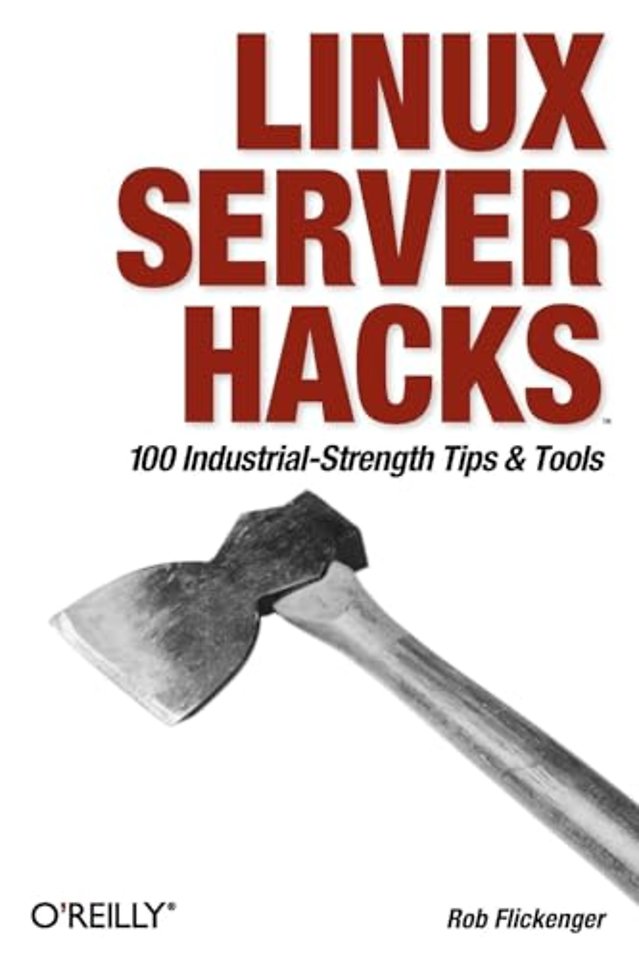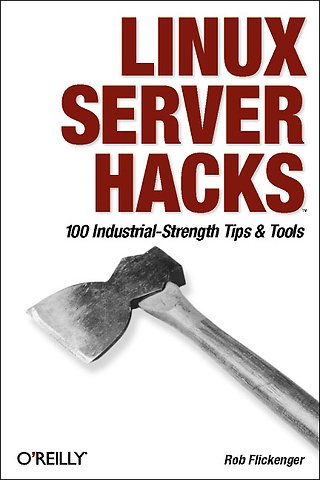Linux Server Hacks
100 Industrial-Strength Tips & Tools
Paperback Engels 2003 9780596004613Samenvatting
A competent system administrator knows that a Linux server is a high performance system for routing large amounts of information through a network connection. Setting up and maintaining a Linux server requires understanding not only the hardware, but the ins and outs of the Linux operating system along with its supporting cast of utilities as well as layers of applications software. There's basic documentation online but there's a lot beyond the basics you have to know, and this only comes from people with hands-on, real-world experience. This kind of "know how" is what we sought to capture in Linux Server Hacks.
'Linux Server Hacks' is a collection of 100 industrial-strength hacks, providing tips and tools that solve practical problems for Linux system administrators. Every hack can be read in just a few minutes but will save hours of searching for the right answer. Some of the hacks are subtle, many of them are non-obvious, and all of them demonstrate the power and flexibility of a Linux system. You'll find hacks devoted to tuning the Linux kernel to make your system run more efficiently, as well as using CVS or RCS to track the revision to system files. You'll learn alternative ways to do backups, how to use system monitoring tools to track system performance and a variety of secure networking solutions. Linux Server Hacks also helps you manage large-scale Web installations running Apache, MySQL, and other open source tools that are typically part of a Linux system.
O'Reilly's new Hacks Series proudly reclaims the term "hacking" for the good guys. Hackers use their ingenuity to solve interesting problems. Rob Flickenger is an experienced system administrator, having managed the systems for O'Reilly Network for several years. (He's also into community wireless networking and he's written a book on that subject for O'Reilly.) Rob has also collected the best ideas and tools from a number of other highly skilled contributors.
Written for users who already understand the basics, Linux Server Hacks is built upon the expertise of people who really know what they're doing.
Specificaties
Lezersrecensies
Inhoudsopgave
Server Basics
1. Removing Unnecessary Services
2. Forgoing the Console Login
3. Common Boot Parameters
4. Creating a Persistent Daemon with init
5. n>&m: Swap Standard Output and Standard Error
6. Building Complex Command Lines
7. Working with Tricky Files in xargs
8. Immutable Files in ext2/ext3
9. Speeding Up Compiles
10. At Home in Your Shell Environment
11. Finding and Eliminating setuid/setgid Binaries
12. Make sudo Work Harder
13. Using a Makefile to Automate Admin Tasks
14. Brute Forcing Your New Domain Name
15. Playing Hunt the Disk Hog
16. Fun with /proc
17. Manipulating Processes Symbolically with procps
18. Managing System Resources per Process
19. Cleaning Up after Ex-Users
20. Eliminating Unnecessary Drivers from the Kernel
21. Using Large Amounts of RAM
22. hdparm: Fine Tune IDE Drive Parameters
Revision Control
23. Getting Started with RCS
24. Checking Out a Previous Revision in RCS
25. Tracking Changes with rcs2log
26. Getting Started with CVS
27. CVS: Checking Out a Module
28. CVS: Updating Your Working Copy
29. CVS: Using Tags
30. CVS: Making Changes to a Module
31. CVS: Merging Files
32. CVS: Adding and Removing Files and Directories
33. CVS: Branching Development
34. CVS: Watching and Locking Files
35. CVS: Keeping CVS Secure
36. CVS: Anonymous Repositories
Backups
37. Backing Up with tar over ssh
38. Using rsync over ssh
39. Archiving with Pax
40. Backing Up Your Boot Sector
41. Keeping Parts of Filesystems in sync with rsync
42. Automated Snapshot-Style Incremental Backups with rsync
43. Working with ISOs and CDR/CDRWs
44. Burning a CD Without Creating an ISO File
Networking
45. Creating a Firewall from the Command Line of any Server
46. Simple IP Masquerading
47. iptables Tips & Tricks
48. Forwarding TCP Ports to Arbitrary Machines
49. Using Custom Chains in iptables
50. Tunneling: IPIP Encapsulation
51. Tunneling: GRE Encapsulation
52. Using vtun over ssh to Circumvent NAT
53. Automatic vtund.conf Generator
Monitoring
54. Steering syslog
55. Watching Jobs with watch
56. What's Holding That Port Open?
57. Checking On Open Files and Sockets with lsof
58. Monitor System Resources with top
59. Constant Load Average Display in the Titlebar
60. Network Monitoring with ngrep
61. Scanning Your Own Machines with nmap
62. Disk Age Analysis
63. Cheap IP Takeover
64. Running ntop for Real-Time Network Stats
65. Monitoring Web Traffic in Real Time with httptop
SSH
66. Quick Logins with ssh Client Keys
67. Turbo-mode ssh Logins
68. Using ssh-Agent Effectively
69. Running the ssh-Agent in a GUI
70. X over ssh
71. Forwarding Ports over ssh
Scripting
72. Get Settled in Quickly with movein.sh
73. Global Search and Replace with Perl
74. Mincing Your Data into Arbitrary Chunks (in bash)
75. Colorized Log Analysis in Your Terminal
Information Servers
76. Running BIND in a chroot Jail
77. Views in BIND 9
78. Setting Up Caching DNS with Authority for Local Domains
79. Distributing Server Load with Round-Robin DNS
80. Running Your Own Top-Level Domain
81. Monitoring MySQL Health with mtop
82. Setting Up Replication in MySQL
83. Restoring a Single Table from a Large MySQL Dump
84. MySQL Server Tuning
85. Using proftpd with a mysql Authentication Source
86. Optimizing glibc, linuxthreads, and the Kernel for a Super MySQL Server
87. Apache Toolbox
88. Display the Full Filename in Indexes
89. Quick Configuration Changes with IfDefine
90. Simplistic Ad Referral Tracking
91. Mimicking FTP Servers with Apache
92. Rotate and compress Apache Server Logs
93. Generating an SSL cert and Certificate Signing Request
94. Creating Your Own CA
95. Distributing Your CA to Client Browsers
96. Serving multiple sites with the same DocumentRoot
97. Delivering Content Based on the Query String Using mod_rewrite
98. Using mod_proxy on Apache for Speed
99. Distributing Load with Apache RewriteMap
100. Ultrahosting: Mass Web Site Hosting with Wildcards, Proxy, and Rewrite
Index
Anderen die dit boek kochten, kochten ook
Rubrieken
- advisering
- algemeen management
- coaching en trainen
- communicatie en media
- economie
- financieel management
- inkoop en logistiek
- internet en social media
- it-management / ict
- juridisch
- leiderschap
- marketing
- mens en maatschappij
- non-profit
- ondernemen
- organisatiekunde
- personal finance
- personeelsmanagement
- persoonlijke effectiviteit
- projectmanagement
- psychologie
- reclame en verkoop
- strategisch management
- verandermanagement
- werk en loopbaan







